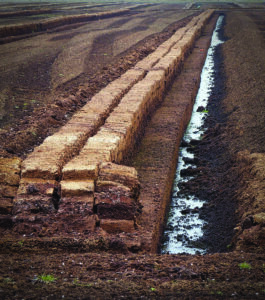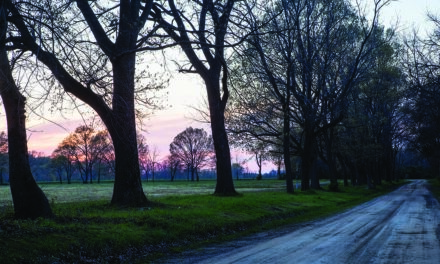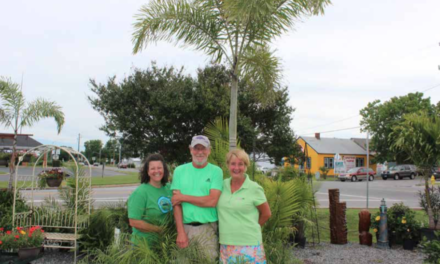
Concerns over peat moss harvesting revolve around releasing large amounts of carbon into the atmosphere. (Photo courtesy Pixabay)
Peat moss has long been used in gardening to improve the soil by keeping it light and helping retain moisture.
But in recent years, gardeners have been learning that harvesting peat moss is not great for the environment.
“There are quite a few reasons why gardeners should consider not using peat moss, but you shouldn’t feel bad if you’ve used it in the past, because we didn’t know the effect on the environment,” said Maggie Cullinan, a scientist who works for PitMoss LLC, a company that supplies an alternative to peat moss.
Peat moss comes from bogs, fens or peatlands. Peatlands are a type of wetland that occurs in almost every country on the globe, but peatlands make up only 3% of the earth’s surface. According to Dianna Kopansky, United Nations’ environment peatlands expert, that relatively small amount of space stores twice as much carbon as all the world’s forests.
U.S. gardeners rely on other countries for peat, Cullinan said. We cannot produce enough to meet demand. Most of the peat that is harvested comes from Canada and Eastern Europe — arctic or subarctic regions where not a lot of plants can survive.
Sphagnum peat moss is a living aquatic plant that floats on the surface of waterways, at the edge of a pond, for example. As it grows, it builds up a thick layer of dead and live peat moss. Dead plants sink below the surface of the water, resulting in a plant structure that does not decompose, Cullinan explained, because there is no oxygen and it’s too cold for most microbial life.
“So you get plant skeletons which are really great at absorbing water, but to get to the skeletons, you must drain the whole bog,” Cullinan continued. “That destroys vital habitat for mammals and birds. Peat companies mine the peat by vacuuming it up with a giant machine and then ship it long distances.”
Mining peat disrupts an ecosystem that takes thousands of years to form. Harvesting, transporting and using peat releases carbon dioxide back into the atmosphere.
Cullinan noted that when peat is exposed to air while being drained, it starts releasing nitrous oxide, which is a greenhouse gas 265 times more potent at warming the atmosphere than carbon dioxide.
There are alternatives — coconut fiber, bark and wood fiber — but all come with a set of tradeoffs, especially sustainability. Coconut fiber, for example, comes from India and Sri Lanka. It can be really salty. The soluble salts must be rinsed with potable (drinkable) water in a region where water is already scarce. Then it is shipped halfway around the world.
Wood fiber is a cool material making its way into the market.
“There’s a lot more wood visible in bags of potting soil now, some chunky and some fine,” Cullinan said. When the growing medium is heavy in carbon, you start to get microbial life increase, she explained. Bacteria need carbon to live on and nitrogen to process the carbon, so they take nitrogen from the soil. A woody substrate is fine for a while, then suddenly you see the bottom leaves yellowing as microbes access carbon and use nitrogen.
The problem is, then you have to fret with nitrogen, perhaps using synthetic fertilizer, which accounts for about 5% of global greenhouse gas emissions.
Or, growers can produce their own compost, reducing their environmental footprint.
Pittmoss is made from shredded recycled newspaper and cardboard, aerated and fluffed. Pittmoss lightens the media mix and holds water.
Pittmoss developer Mont Handley, a materials/mechanical engineer, read about the problems with peat moss in a National Geographic article in the 1990s. He wondered why no one was doing anything about it. He saw newspaper, a readily available waste product made from trees, as a possible substitute. He figured out how to blend and mix newspaper-based particles into a form that holds water but keeps space for air, providing a good, strong environment for growing plants.
Handley got a research grant to develop his product, but nurtured the idea for some 20 years more before appearing on the reality show “Shark Tank.” There he obtained venture capital form investor Mark Cuban to launch a consumer retail product line in 2017.
Pittmoss is produced in Ambridge, Pa. The name comes from Pittsburgh, where the product originated.
Pittmoss faces challenges because people experience different results than with peat moss, Cullinan said. “We’re never going to replicate peat. We need to replace it, to learn new things, manage things differently, water differently and fertilize more or less,” she said. “Adapting is difficult, especially if the grower learned from an older mentor. Gardening is challenging. Anything different presents a new hurdle to overcome, along with pest and disease pressure and water needs.”
Cullinan said the ultimate goal is to have regional facilities, to create a regional soil economy converting what was once waste in a landfill or maybe recycled into potting soil that functions better than peat moss. It’s more sustainable produced regionally that supports the local economy.
“It’s an all-around sustainability win,” Cullinan said.
Delmarva Native Plants in Hurlock, Md., uses Pittmoss. Founders Clark DeLong and Jillian Parisi said they are proud of their sustainable growing media which is mixed in house. All the components are either agricultural or post consumer byproducts. No peat, no coir, nothing imported and no wetlands destroyed in the process of manufacturing it.
DeLong and Parisi firmly believe the horticulture industry should be a force aimed at preserving the natural environment as our world continues to face ever-increasing degradation.
They have been able to cut fertilizer use by one-third.





